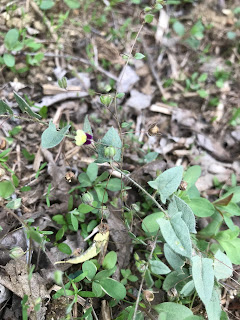What exactly are they doing as they perform their mad, gyrating dance. I guess it's probably a feeding strategy combined with a bit of anti-predator defence. However, I like to think they're just listening to some top tunes and dancing like no one is watching.
Anyway, with 11 species in the UK you simply can't ID one from watching it and so I'd never actually properly identified one, except to the general moniker of 'whirligig'.
Over the dark and wet days of the last few weeks I've been working my way through the backlog of unidentified beetles sat in my fridge. And lo and behold a whirligig had been caught in my moth trap one evening, giving me a chance to properly give it a name.
After a couple of wrong turns in the key and some help on the UK Beetles facebook page, this keys out as Gyrinus substrisatus the most common whirligig in the UK and pretty much ubiquitous. The overall shape, colour of legs and especially claws point to this species.
However, a new species for me and the garden.
Here's a tune for the beetles....


















































